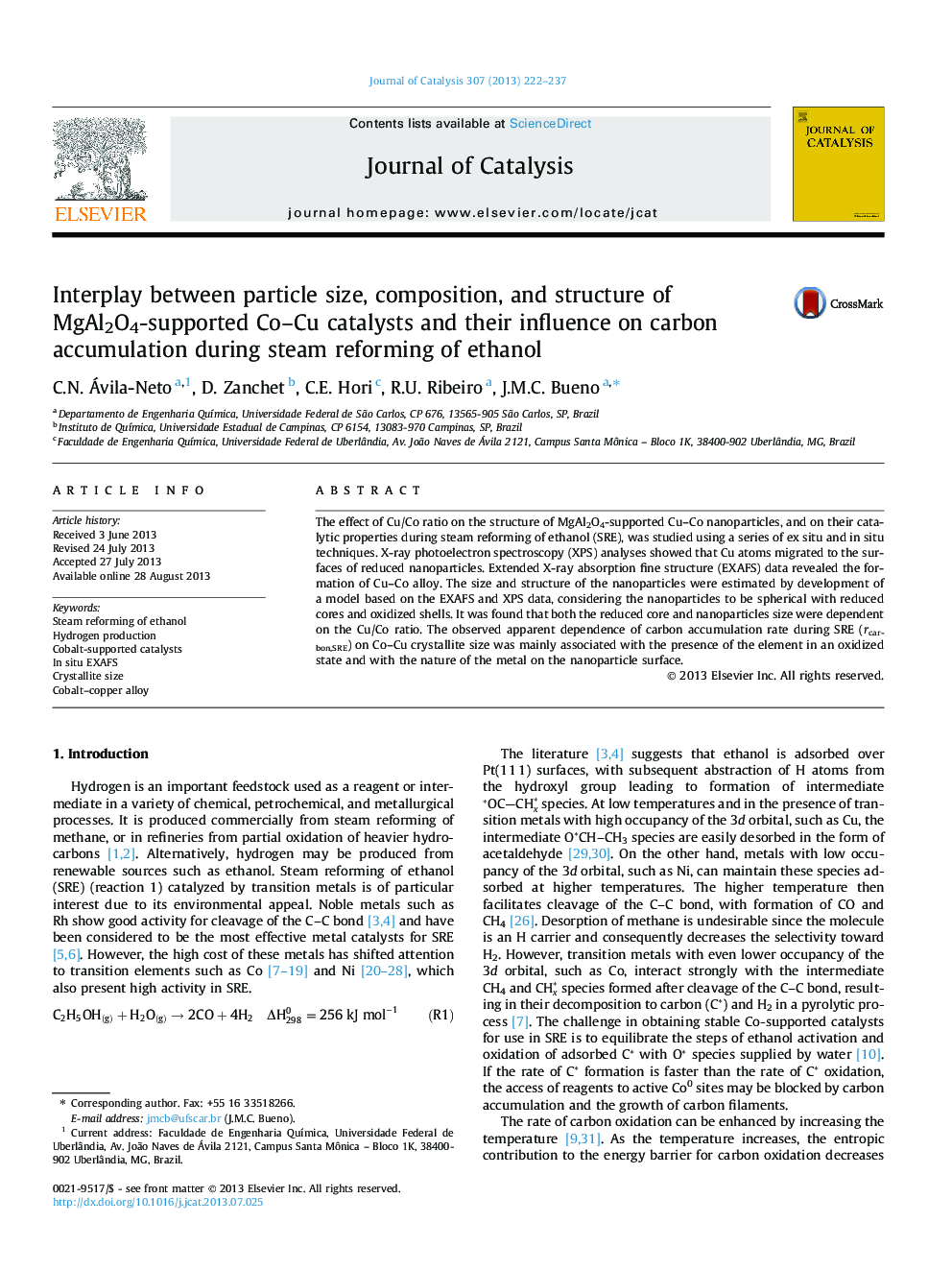| Article ID | Journal | Published Year | Pages | File Type |
|---|---|---|---|---|
| 61165 | Journal of Catalysis | 2013 | 16 Pages |
•Cu/Co ratio is associated with catalytic properties in steam reforming of ethanol.•Cu/Co ratio is associated with degree of oxidation of metal nanoparticles (NPs).•Model proposed of Cu–Co NPs with reduced cores and oxidized shells.•Degree of oxidation of NPs is key factor to control carbon accumulation in SRE.
The effect of Cu/Co ratio on the structure of MgAl2O4-supported Cu–Co nanoparticles, and on their catalytic properties during steam reforming of ethanol (SRE), was studied using a series of ex situ and in situ techniques. X-ray photoelectron spectroscopy (XPS) analyses showed that Cu atoms migrated to the surfaces of reduced nanoparticles. Extended X-ray absorption fine structure (EXAFS) data revealed the formation of Cu–Co alloy. The size and structure of the nanoparticles were estimated by development of a model based on the EXAFS and XPS data, considering the nanoparticles to be spherical with reduced cores and oxidized shells. It was found that both the reduced core and nanoparticles size were dependent on the Cu/Co ratio. The observed apparent dependence of carbon accumulation rate during SRE (rcarbon,SRE) on Co–Cu crystallite size was mainly associated with the presence of the element in an oxidized state and with the nature of the metal on the nanoparticle surface.
Graphical abstractShell thickness and rate of carbon accumulation under SRE versus number of first neighbors of Co in the shell of Co12Cux nanoparticles.Figure optionsDownload full-size imageDownload high-quality image (203 K)Download as PowerPoint slide
